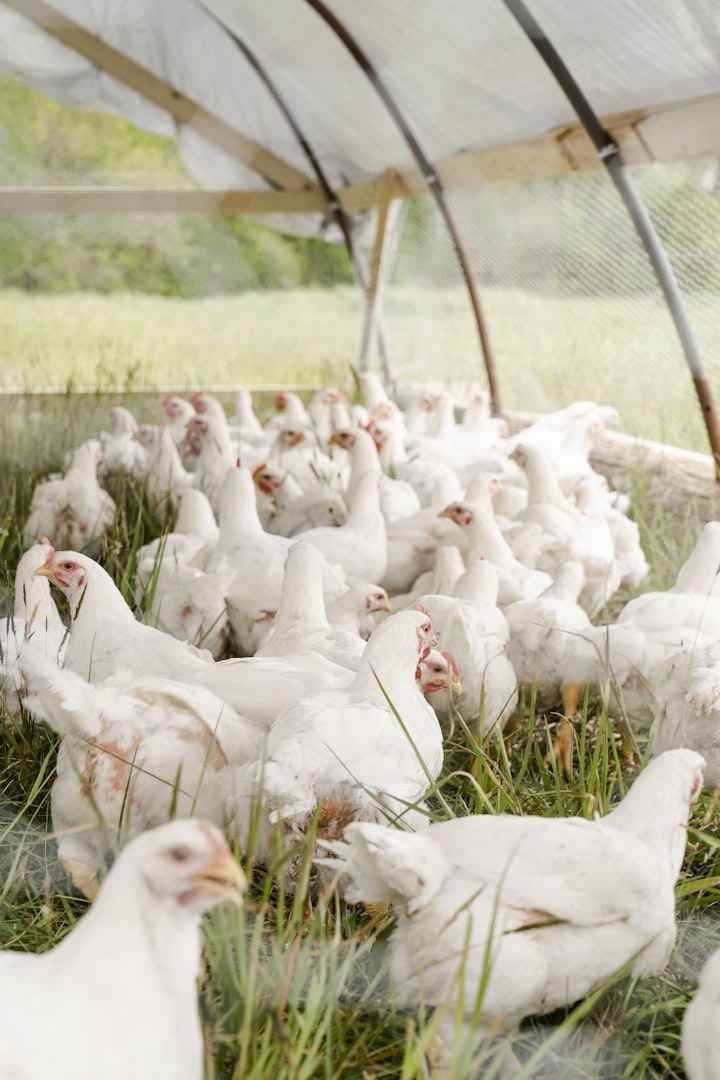The broiler chicken
Broiler chicken

“What are broiler chickens?” is perhaps one question that comes to mind. This is normal, especially if you’re thinking about expanding your present flock.
Broiler chickens are chickens primarily raised for their meat. They are among the world’s most farmed and exploited animals. Continue reading to find out why.
Broiler Chicken Production
Broiler chickens have been selectively developed to possess certain desirable characteristics, such as the ability to build larger breast muscles for maximum meat yield. This meets the needs of corporations and consumers, but it comes at the expense of the chickens.
Chicken broilers descended from the Indian Subcontinent jungle fowl. Cornish genes for fleshing and conformation are blended with genes of White Plymouth Rock for its rapid growth and white feathers.
Because of their fresher de-feathered bodies, white-feathered birds became the industry standard for industrial broiler production. Hence, they’re marketed as “white flesh” or “chicken breasts.”
These broilers are frequently thought to be genetically engineered; however, this isn’t technically correct in the sense that the term is usually interpreted. Chickens grown for meat are bred for rapid growth, causing them to expand to excessively huge sizes.
Selective breeding, however, occurs when particular animals are bred to generate offspring with desirable characteristics; in the instance of broiler chickens, the goal is to develop birds that produce more meat.
Broiler chicken genes have been modified in this way over time as a result of selective breeding for specific genetic outcomes. They’re not exposed to genetic modification in the lab, which would normally include DNA editing, splicing, or gene transfers..
Broiler breeder chickens, on the other hand, are not often caged, and they are usually, though not always, permitted to mate “naturally.” However, because the hens are bred to produce such a high number of eggs, broiler breeding does not occur in the same way as it would in the wild.
Furthermore, several factors have influenced the efficiency and profitability of broiler production. The broiler business has been able to produce a chicken weighing 1.8 kg in 6–7 weeks thanks to advancements in disease control, breeding, nutrition, and management practices.
Antibiotics, vaccines, confinement rearing, and computer-balanced feeds all help broilers achieve a feed conversion ratio of less than 2 kg of feed per kilogram growth.
By merging production, processing, and marketing broilers under the same management and ownership, vertical integration has enhanced efficiency even further in the broiler business.
Incubated and hatched
Broiler chicks begin their lives in hatcheries, which incubate and hatch thousands of eggs. Because they are kept in separate breeding facilities, they never get to see their parents.
When chicks turn about a day old, they are placed on conveyor belts where they are vaccinated. Vaccinations are given through spraying or injection.
The conveyor belts next load them in shipping containers that are roughly the size of a large desk drawer. The crates are stacked on top of each other and loaded into a truck for transit to the grow-out facility, where the birds will spend much of their shortened lives.
Transported to Farms
The journey from the hatchery to the grow-out farm, where the chicks will be reared for several weeks, can be lengthy and exhausting. To maintain biosecurity on the farm, broilers arrive at the same time from the same hatchery.
Since they are only one day old, the chicks are sensitive to weather extremes during transportation as they’re still unable to control their body temperature.
Broiler chickens are grown in huge houses which are open structures. Here, they may roam, explore, eat, and socialize with other chickens. Depending on the farmer’s wish, some animals can have varying degrees of access to the outdoors.
Each chicken house contains approximately 25,000 birds. A broiler chicken takes around seven weeks to reach market weight, and after they’ve reached the required age and size, they’ll all be transported simultaneously to their next stop.





Comments
There are no comments for this story
Be the first to respond and start the conversation.